It so happened that in this cycle we dealt mainly with HI-FI audio, without affecting the issue of video equipment, and yet, in the Land of the Soviets there were, albeit somewhat late, but achievements in this regard. Considering the Soviet video as a relatively rare and mostly restructuring phenomenon, the definition of a HI-FI (i.e., high fidelity of reproduction) is best suited for other video discs of the Laser Disc format and players for them.

By the time of development in the Union, the described technology was living its last years behind a rusting iron curtain. At the same time, for the overwhelming majority of Soviet people, few of whom even the banal VHS-VCR was available, seemed to be a true technological miracle. Under the cut of a desperate and initially doomed to failure to "catch up and overtake".
A few words about the format and its history
According to Wiki, the creation of the Laser Disc format was based on optical recording technology, created by David Paul Gregg in 1958 and improved by Philips engineers in the next decade. The format itself was also created and for a long time Philips moved in cooperation with MCA.
Interestingly, the principle of through recording and playback (to the light), used by Gregg, was of little use, and it was replaced with the use of reflected light, which was more practical. In the future, all optical media will use exactly the reflected laser beam during playback.
The first experimental LD-disks and experimental prototypes of the players appeared in the late 60s, and in 1972 the MCA and Philips presented the first successful results of the experiments. Throughout the 70s, technology has improved. The serial production of players and the start of sales of the first LD-disks began in 1978, i.e. 2 years after the appearance of VHS and 4 years before the start of the CD.
LD-disks could be one-sided and two-sided, in order to compact the recording and increase the amount of recorded video information, 3 technologies were used, based on changing the speed of rotation of the disk.
CAV (English Constant Angular Velocity - constant angular speed) - a similar method is used when playing records, allows you to record 30 minutes of video and audio material on each side of the disc.
CLV (English Constant Linear Velocity - constant linear speed) - the analogue is used when playing CD - the technology allows you to record up to 60 minutes of video and audio material on each side of LD. Often this method of compaction due to technological errors caused crosstalk.
CAA (eng. Constant Angular Acceleration - constant angular acceleration) - the compaction method developed by Pioneer has become almost universally (except 3M / Imation) used since the early 1980s. This happened in connection with the possibility to minimize distortion and interference during playback. Almost never indicated on the disks.
MCA produced discs, and Philips created players. Soon the companies found the format unpromising and the MCA halted production. Philips also by the early 80s lost interest in its own offspring, and the production initiative was intercepted by Japanese companies, in particular, Pioneer, which became the most popular producer of LD-players. Richard Wilkinson, Ray Deakin and John Winslow, the developers of the format, considered that the format still has chances of survival ... They organized the company Optical Disc Corporation, which subsequently took up the publication of LD.

By the mid-80s, several independent publishers appeared in the United States and Japan. Later, the Avangard NGO together with the Penza State Scientific Production Enterprise Rubin released LD in the USSR. Laser Disc, which was originally only an analog format, by 1987 began to be produced also in the form of a hybrid, which allowed recording video in analog format and sound in digital (as on standard CDs). The most popular LD has become in Japan, where at the time of the cessation of publication of disks in 1999, it continued to use about 10%. In the USA, this indicator did not exceed 2% (not more than 2,000,000 people).
Leningrad LD
Development of domestic LD began only 11 years after this format became serial in the rest of the world. It should be clarified that in 1989, in the Country of the Soviets, even audio cassettes were considered a deficit, and VHS video media were an extremely rare commodity.
Perhaps, out of a desire to catch up and overtake, and perhaps out of the altruistic need to give the consumer a higher-quality and somewhat more convenient format, the development of Soviet LD-disks began in the Leningrad NPO Avangard.
Unlike many other cases where the names of the creators of technological innovations in the USSR remained unknown, in this country the country can recognize at least some of its heroes. Information about the creators of the Soviet Laser Disc kept the St. Petersburg State Archive. The fact is that the NGO created a special department that implemented a program to create Soviet LD, the photos from which became archival materials.

The head of this division was D.G. Backyard. LPVelutin, the chief of the sector of the development of laser video discs, the engineer S.N.Stepanov and the technologist N.P.Petrov worked with him - these are people who took direct part in adapting the western production technology and recording LD in the USSR.

Experimental LDs appeared in 1989 and already in 1990 they went into a small series to equip prototypes of the experimental player Rus-501 VIDEO. The production technology and recordings for the late 1980s no longer seemed complicated and were quickly adapted for the features of mass production in the USSR.
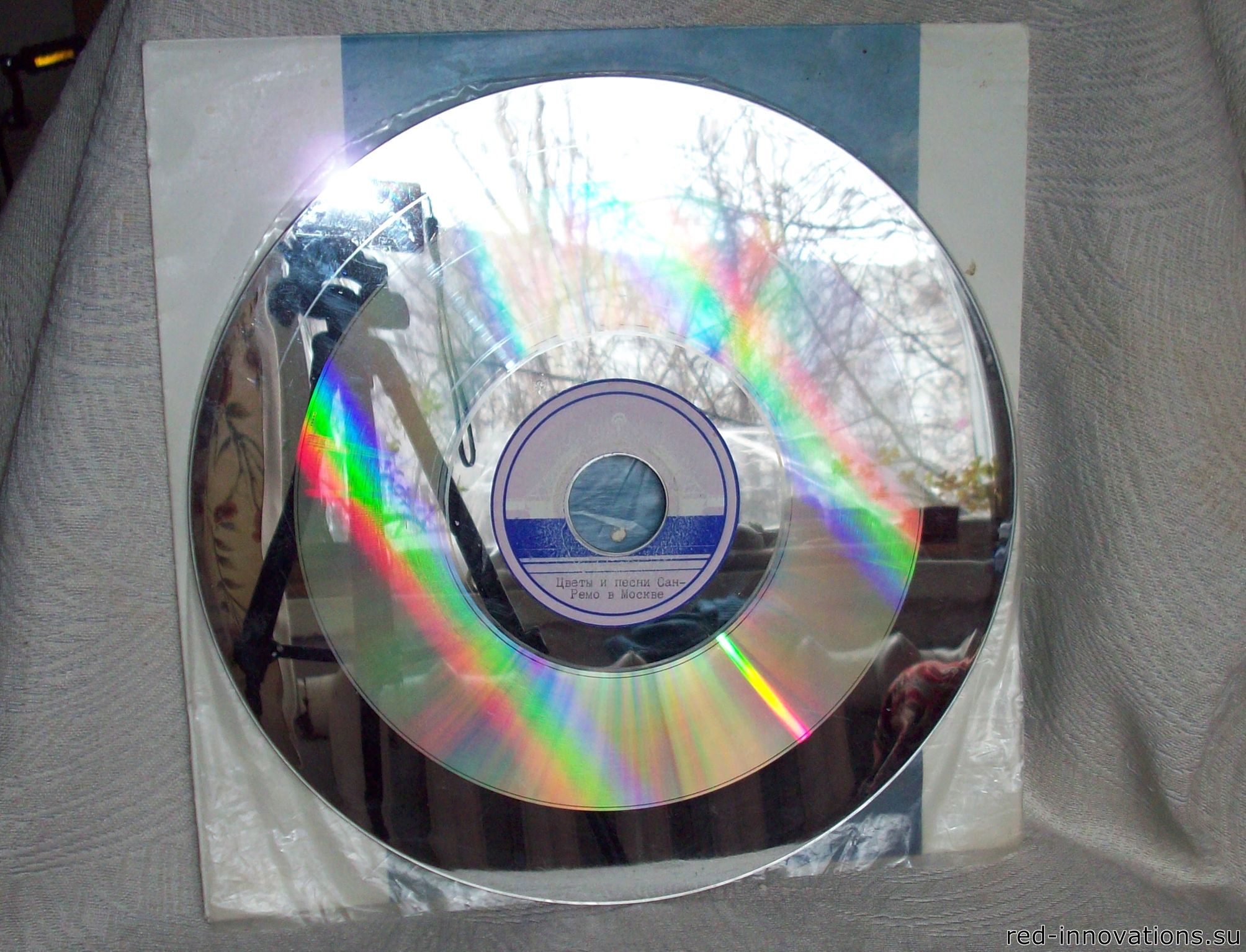
In the Soviet period, only 2 releases were prepared on the LD: “Flowers and Songs of San Remo in Moscow” in 1989 and a video tour of the AS Museum. Pushkin in St. Petersburg (prepared in 1991, came out and appeared on the shelves in 1992).
The first pancake lump or player for one plate
The Avangard NGO began work on this topic in 1987, at the same time the development of a serial Soviet player started for them, since they were not supplied from abroad and there was a need for a player with a potential entry to the Soviet market.
The development of such serial players began at the Ryazan State Instrument Plant, and later the production of serial samples was continued at the Mashpribor Yaroslavl plant. Creating a player was carried out in parallel with the development of technology to create a disc. Unfortunately, the names of the engineers who developed these players remain unknown.
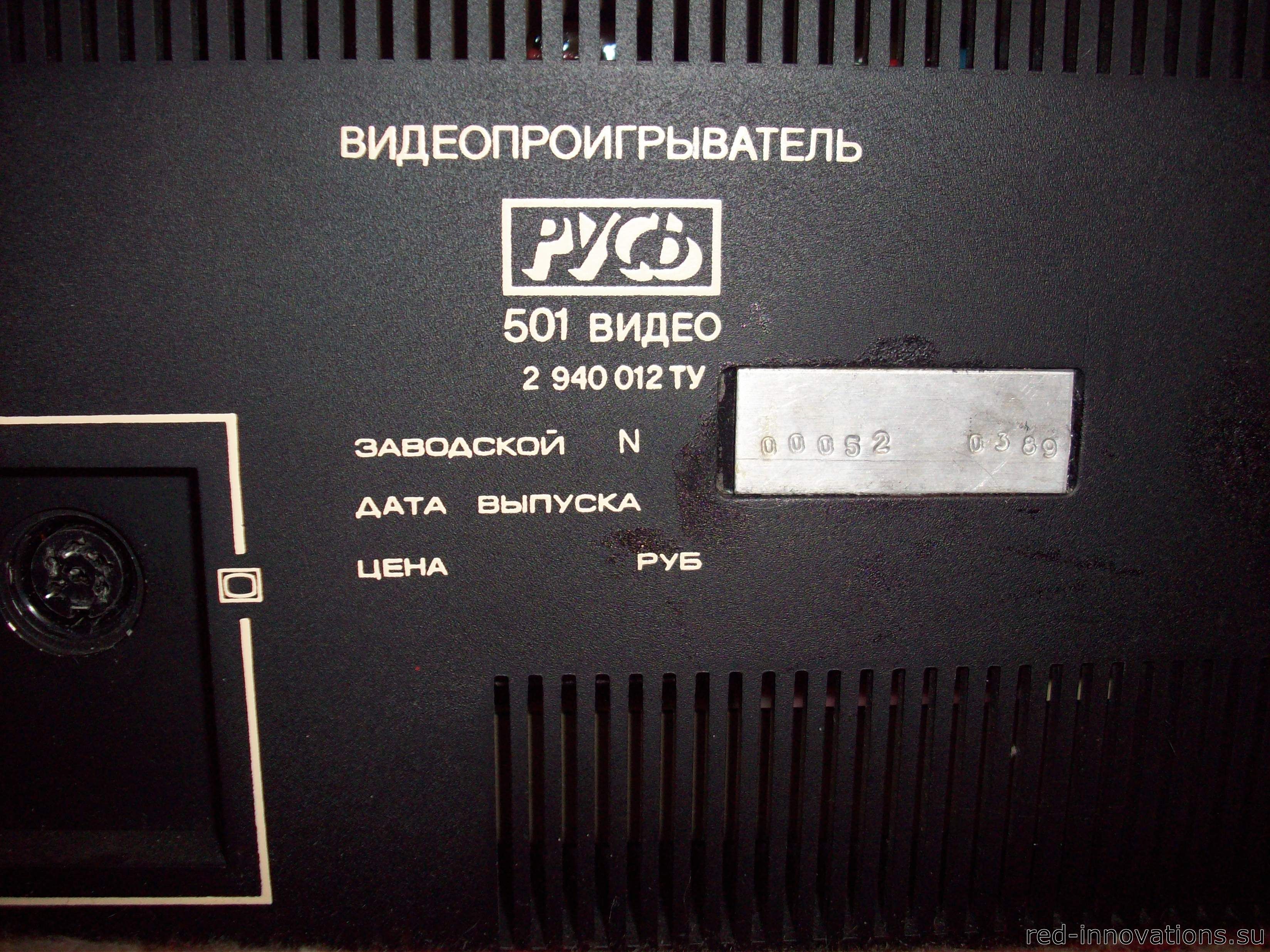
The first small-scale device of this type was the player Rus-501 VIDEO. In total, from 1988 to 1989, the year of such devices was released a little more than five hundred. At the moment, there are 3 surviving players. For a time, it was believed that the samples of this series have been lost.

Like most experimental development player turned out raw. It could only play discs with a constant angular velocity of rotation, i.e. “CAV” format, which was used in the West until 1982. At the time, only one CAV-disc “Flowers and Songs of San Remo in Moscow” was produced in the Union, which as a test was included in the Russia-501 VIDEO package.
The device was installed not a semiconductor, but a helium-neon laser, which required a power supply with a voltage of 2,000 volts, which circuitry and mechanically complicated the device.
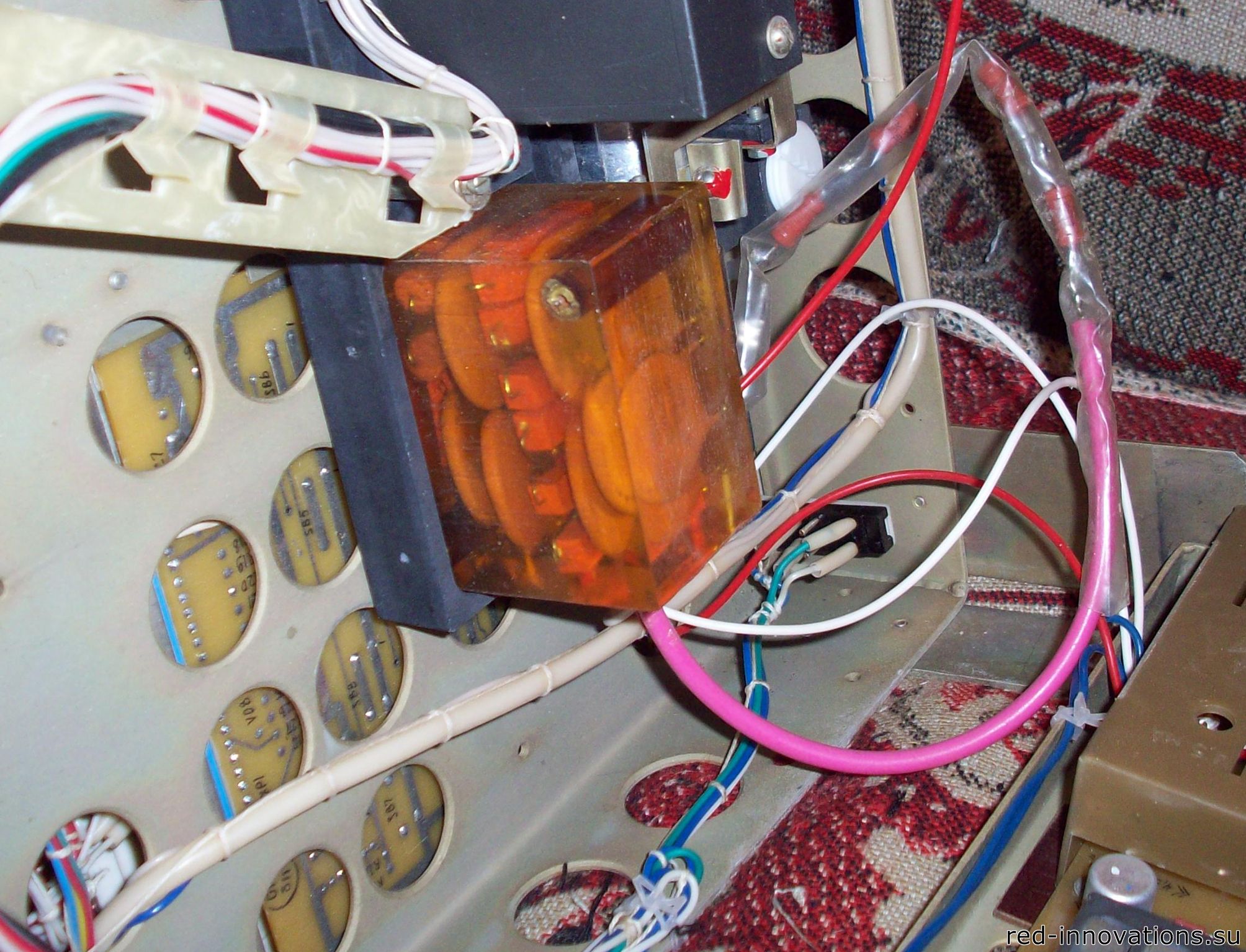
When you open the lid of the player, the laser did not turn off - it could damage the eyes, and accordingly, made the player potentially dangerous to health.
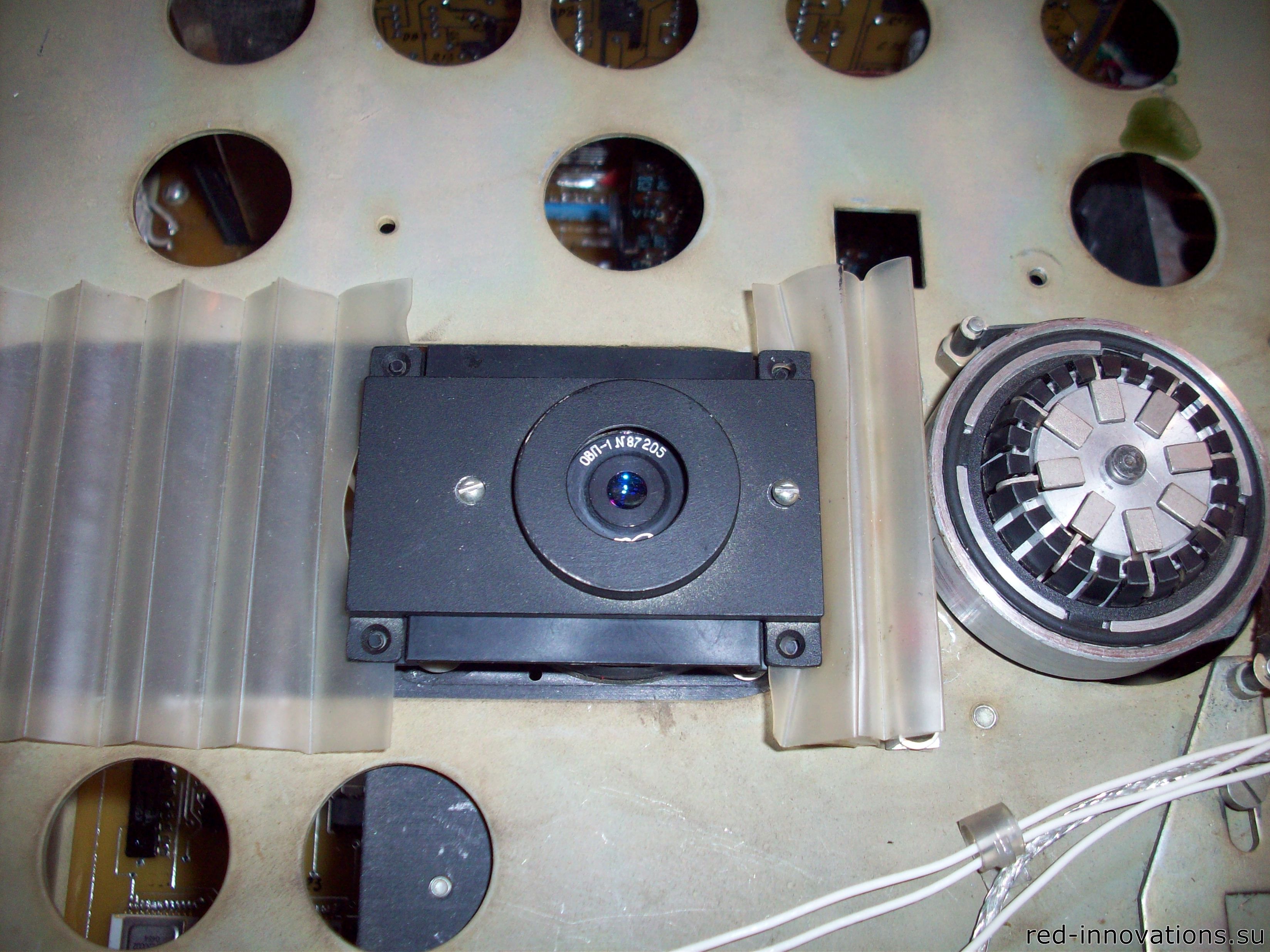
Among other things, according to the recollections of the first users, both mechanics and electronics were constantly plugged in, which also could not please.
Unnoticed Trump Rus VP-201
Taking into account the errors of the pilot device, a more advanced model "Rus VP-201" was developed and launched into a series. Despite the rapidly aging technology, this player at the time of its creation in 1990 could compete with similar Western devices, which at that time were produced in limited series by Pioneer, Panasonic, SONY and Kenwood.

The only drawback that remained as a “hereditary” defect from “Russia-501 VIDEO” was a helium-neon laser, which naturally required high voltage, everything else was thoroughly reworked.

First of all, the continuous operation of the laser was eliminated as a source of potential health hazard. The format component has been extended to support CLV-drives. To simplify management, the device received an IR remote control.
The device's functionality can even be called redundant - the management implemented not only standard navigation functions with accelerated forward and reverse playback, but also slow motion playback, speed setting in accelerated / slow motion modes, frame search by number.
The player control system was a kind of on-screen menu of modern TVs and players. The implementation of such a highly functional control was made possible through the use of a digital module based on the KP580BM80A microprocessor and LSI, some of which were created specifically for this player.

Special mention deserves the sound, as Russia VP-201 became the first and remained the only video-reproducing device with stereo sound, created in the USSR.
Also in the USSR a laser lens, which rises by a magnetic field and is fixed in a metal cylinder, is used. This bold and unique solution for its time radically different from the classic soft suspension.
The most surprising was the fact that the player was almost completely realized on the basis of the domestic element base, with the exception of the ROM chip and the three limit switches of the microswitches.
In 1991, an additional serial production of the device began at the Mashpribor Yaroslavl plant, which began production of a completely similar player called Amfiton VP-201.
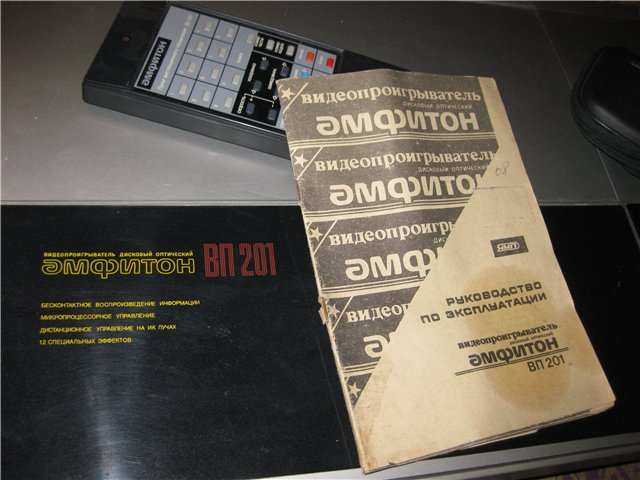
Many collectors, researchers of the Soviet era, in particular, the creators of the site red-innovation.ru Max Sysoev and Igor Emelyanov consider Rus VP-201 as the most high-tech product created for the mass consumer market in the USSR.
Total
Once again, I note that the history of the creation of such devices demonstrates the maturity and self-sufficiency of engineering personnel in the USSR, the viability of the technological base, and the practical possibility of producing high-tech devices in the Union. Unfortunately, they were completely leveled by atavisms of the planned economy, the exclusive priority of the defense industry, the residual principle with respect to consumer goods, and sometimes simply illiterate domestic economic policies.
In the post used photo content:
red-innovations.suwww.rw6ase.narod.ruspbarchives.ruJeans
Our catalog contains a wide range of equipment for video playback: Blue-ray players , televisions and panels , projectors , home theaters and speakers for them .